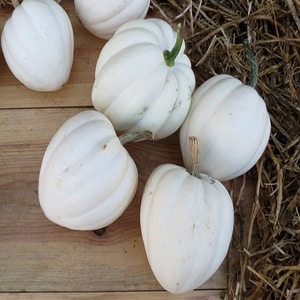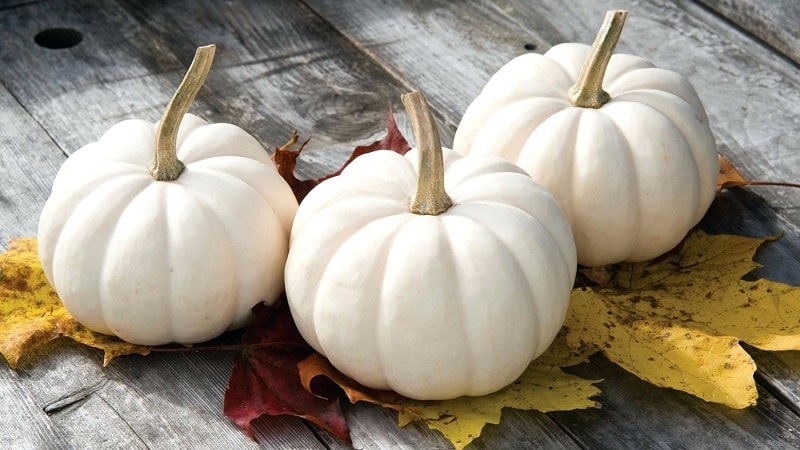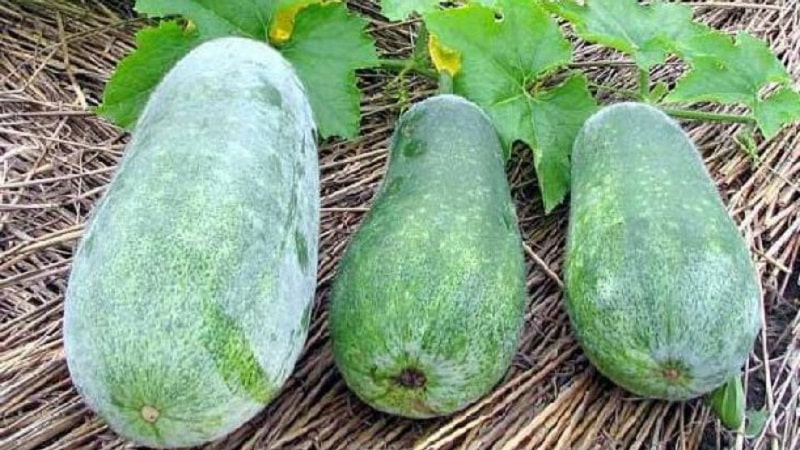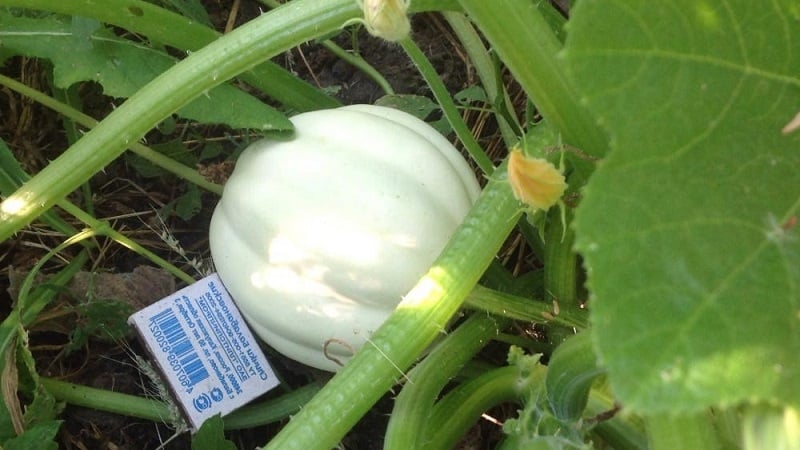Besides color, how does a white pumpkin differ from the rest?
We are used to seeing the most common varieties of pumpkins in the markets: green, yellow or orange. Is there a white pumpkin? It still happens, and has long gained popularity all over the world.
The exotic southerner takes pride of place among other varieties. It has a lot of useful properties and has an unusual appearance. In this article we will talk about the growing features and characteristics of white varieties.
Classification of pumpkin varieties
There are so many varieties of pumpkin that you can simply get confused among them. Helps systematize knowledge about melons classifications created based on plant characteristics:
 Appearance: size of leaves, branches and cuttings, shape of fruits, color and thickness of peel, color of pulp, type of seeds (hulled or not).
Appearance: size of leaves, branches and cuttings, shape of fruits, color and thickness of peel, color of pulp, type of seeds (hulled or not).- Plant characteristics: ripening speed, yield, storage duration, resistance to pests and environmental conditions.
- Taste properties: sweetness and texture of the pulp.
According to external characteristics, varieties are divided into:
- bush (Freckle, Amazon);
- medium-climbing (Rossiyanka, Altai);
- long-climbing (Almond, Zorka).
Low temperature resistance:
- cold-resistant (Adagio, Candy);
- heat-loving (Volga gray, Kroshka);
- for temperate climate zones (Smile, Freckles);
- late ripeness (Atlant, Stofuntovaya).
By purpose:
- stern (Record, Titan);
- dining room (Konetteka, Gribovskaya winter);
- decorative (Baby Boo, Little Orange);
- universal (100 pound, Vitamin).
Most table varieties are suitable for cooking pumpkin juice, soups, purees for baby food, salads and cereals. The fruits are baked, stuffed, and stewed.
Decorative varieties have a bizarre shape and unusual color. Most often they are used as decoration and not eaten.

Varieties are divided into::
- large-fruited (round-shaped fruits, weighing about 20 kg, with a soft rind);
- nutmeg (cylindrical or round pumpkins, with soft skin, can be stored for a long time, the pulp contains polysaccharides and vitamin A);
- hard-barked (fruits with a dense peel, round or cylindrical shape, long shelf life).
It will be interesting:
Pumpkin “Miracle Yudo”: a unique variety for long-term storage
Distinctive features of white pumpkin
These varieties of melons have several names: white, winter or wax pumpkin. Their place of origin is the island of Java. Later, the plant appeared in China and Japan, from where it migrated to other countries of the world.
The main difference between this crop and other varieties is the white color of the peel.. The color of the pulp, depending on the variety, is white or yellow. The plant has long and dense stems that grow rapidly, especially in fertilized soil.
The rind of the fruit of the Benincasa variety has a green tint at the beginning of growth, but as it ripens, a white waxy coating with a bluish tint appears on the surface. The peel contains a large amount of vitamins, pectins, micro- and macroelements. The fruits have an oval or round shape, are stored for a long time and do not lose their taste and beneficial properties.The length reaches 60 cm, but the weight of the fruit rarely exceeds 10 kg.
The photo shows what shape and coating the pumpkin has on the crust.

The pulp of white pumpkin is juicy, moderately sweet, not cloying. The fruits are stored for 2-3 years in favorable conditions. Melon is used to prepare a variety of dishes, in traditional medicine recipes and as decoration for the garden.
Reference. The riper the Benincasa pumpkin, the denser the waxy coating, which serves as protection against moisture loss.
Features of cultivation
The best time to plant vegetables is March or the first week of April. Without pre-soaking, the seeds are planted in peat cups, two in each cup. After the sprouts have become stronger, the plant is moved to open ground in mid-May. White pumpkin varieties are planted in an open sunny area in soil that is not oversaturated with fertilizers.
The plant is heat-loving, does not tolerate shade or even partial shade.. As they grow, excess shoots are cut off to form large, fleshy fruits.
Only warm water is used for irrigation. From time to time the plant is fed with compost. The variety tolerates drought well. The fruits begin to be collected at the end of September - beginning of October, along with the stalk.
Read also:
A favorite among gardeners and cooks is the Butternut pumpkin.
Characteristics of white pumpkin:
- The length of the stem reaches 3-4 m. As it grows, it quickly clings to a vertical column with its tendrils.
- The leaves grow large.
- The flowers are bright and heterogeneous. They emit a strong odor that attracts insects.
- The plant does not pollinate with other varieties, so there is no need to plant it in isolation.
Most popular varieties
One of the most popular varieties is Benincasa.. The weight of the fruit varies from 3 to 25 kg. The shape can be round or oval. The vegetable is characterized by a pleasant sweet taste. The pulp is white, the peel is dark green, covered with a waxy white coating. A distinctive feature of the variety is that young pumpkins are much sweeter than ripe fruits and have a pronounced taste. The buds and leaves of the plant are used for food. The calorie content of the vegetable is only 15 kcal/100 g. The fruits are 95% water and contain saturated acids, polysaccharides, ash and fiber.
Rarer examples of white pumpkin include varieties: White Cusho, White Acorn, Tennessee Sweet Potato, Fortuna, White Bor, Valenciano.
Variety Kusho white managed to win the trust of Russian gardeners. The vegetable has a lot of advantages and useful properties. The fruits resemble a pear in appearance and have a dense white peel with a greenish tint. It is sometimes difficult to determine by taste whether it is pumpkin or zucchini. The pulp is light, sweetish in taste. The fruits are fried instead of potatoes.

Variety Acorn white (pictured) ripens early. The fruits are small, round in shape, weighing about 1 kg. The color of the peel varies from white to cream. The pulp does not have a recognizable pumpkin taste and contains practically no carotenoids and polysaccharides. Therefore, it has no sweetness; it tastes like potatoes, but with a less dense structure. Characterized by a long shelf life. The longer the fruit sits, the denser the crust becomes.
The size of the pumpkins is very convenient - portioned. The fruits are used for stuffing, frying, added to soups, baked and stewed with spices.
Conclusion
Each variety of white pumpkin is interesting in its own way and has distinctive features.The moderately sweet pulp and neutral taste will appeal to those who are watching their weight and looking for an alternative to high-calorie potatoes. The dense crust and waxy coating will allow the fruits to be stored for a long time and used for food as needed.